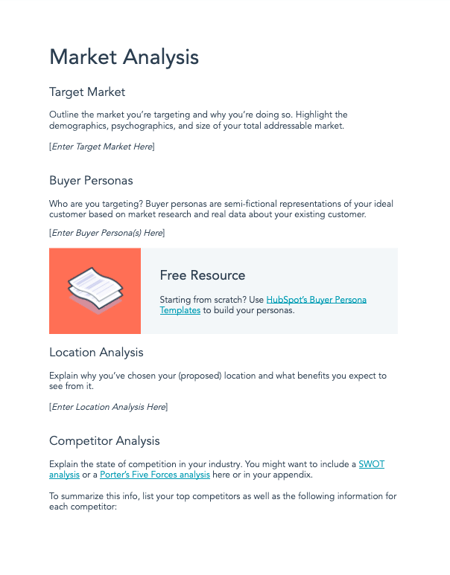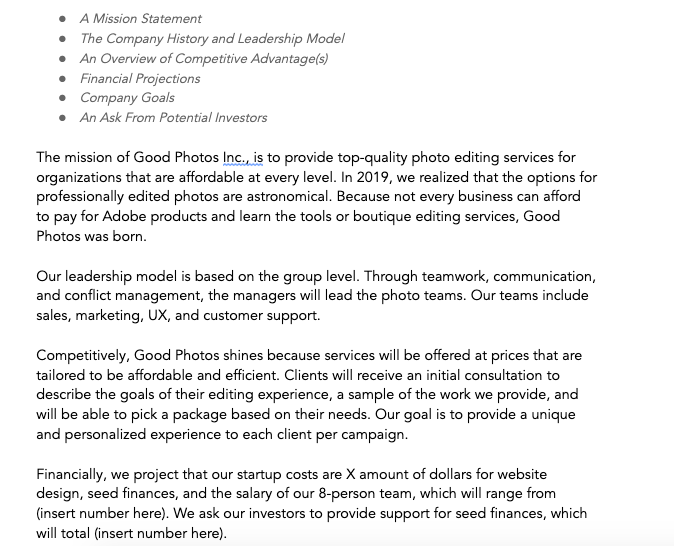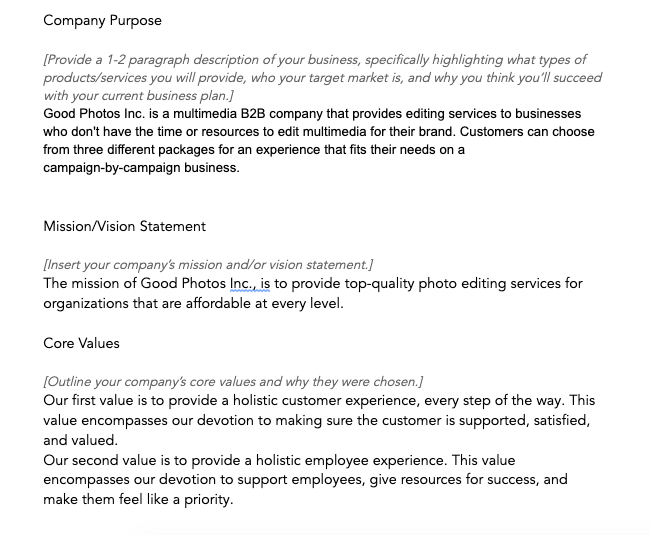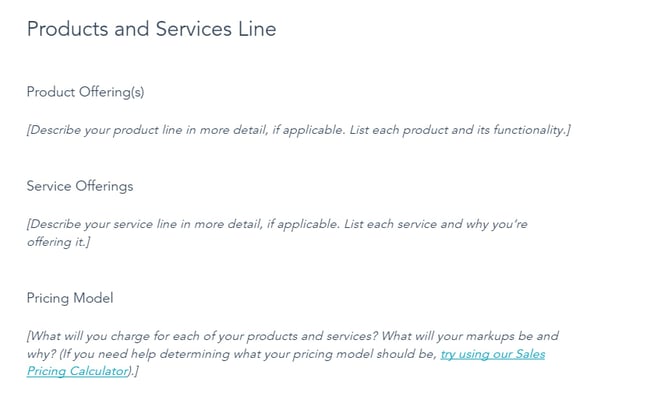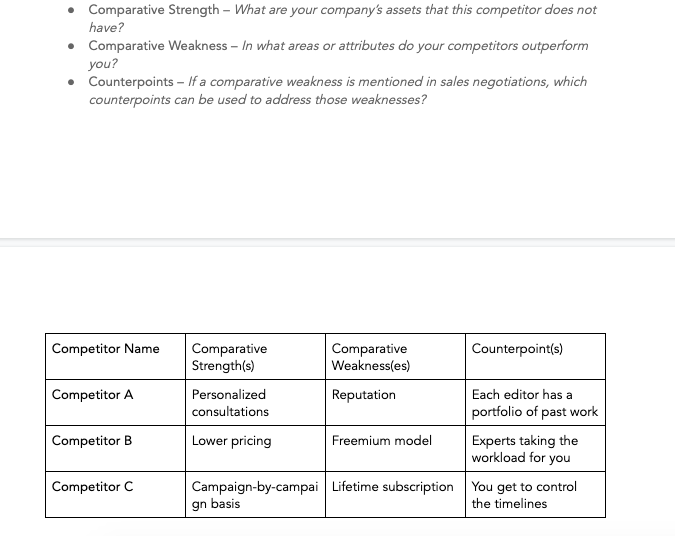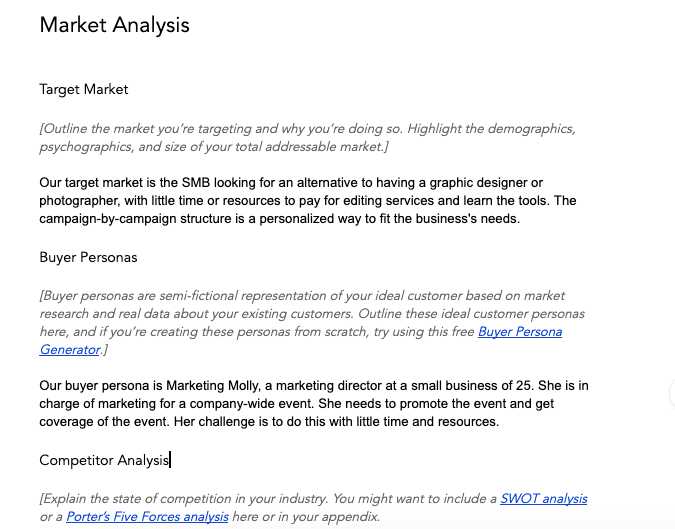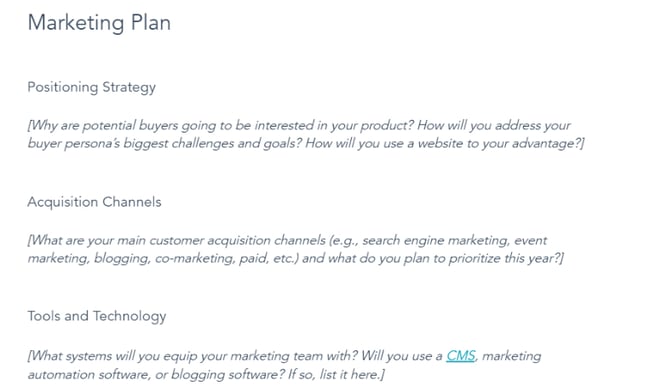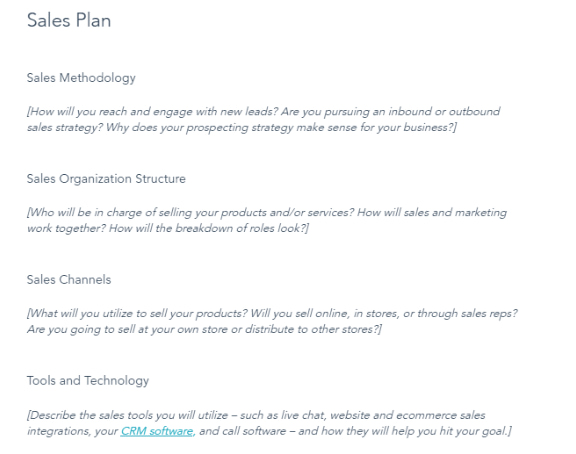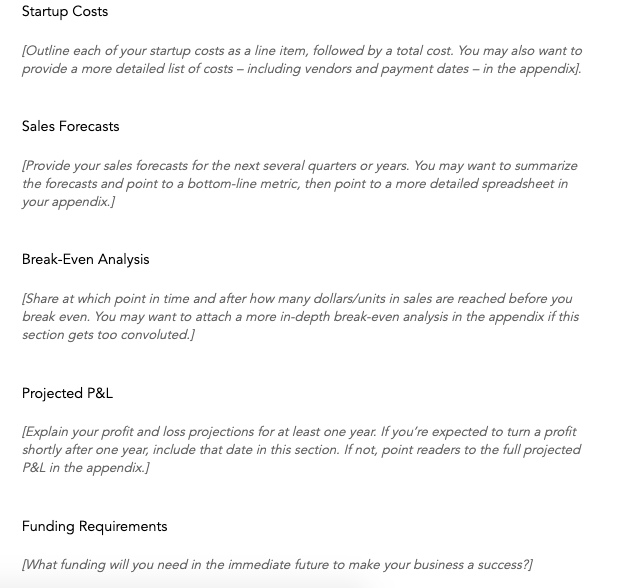How to Write an Ecommerce Business Plan [Examples & Template]
If you have a promising idea for an online ecommerce business, it’s important to create an ecommerce business plan to ensure your vision has enough stock to be profitable.
Having a business plan for your online store will help you define your target market, establish your monthly and quarterly sales goals, and increase the likelihood of long-term ecommerce success.
In this post, we’ll go over what an online store business plan is and how you can create one for your ecommerce startup. Let’s get started.
Whether a company operates as a startup or has years of operations and growth under its belt, an ecommerce business plan is essential for evaluating a business and determining areas of improvement.
An ecommerce business plan is especially important, with an increasing number of shoppers conducting business online. It’s estimated this number has reached over 2 billion. Having an ecommerce business plan keeps you organized and is useful when seeking investors who need to understand your company.
So, let’s dive into some examples of ecommerce business plans and what goes into writing one using our free template.
Ecommerce Business Plan Template
Download Your Free Template Here
HubSpot’s template provides clear steps to structuring one for your ecommerce business. Throughout this section, I’ll use the example of a photography company specializing in online photo editing.
1. Give an executive summary.
An executive summary is a one-to-two page overview of your business. The purpose of an executive summary is to let stakeholders know what the business plan will contain. HubSpot’s free template offers some tips on how to write one, as I’ve done below:
It’s important to provide an executive summary so that an investor or executive, who doesn’t have the time to read your full plan, can quickly see the most important highlights of your business.
2. List and describe your business.
This is the section that needs the most detail because it highlights what you’re selling. To begin, provide an overview of your product or service. For instance, a photography company would probably list their photo packages arranged by price and services, as I did below:
HubSpot’s template also provides direction on how to describe your company’s purpose and break down values. It also advises businesses to include team structure, if applicable. Below that, you should go into detail about your product and service lines.
3. Detail your products and services.
Once you have described your business and its purpose, you’re ready to dive deeper into your plan. What products and services do you or will you offer? This is an opportunity to list each item and its purpose, allowing you to answer the question ‘why?’ Why are you choosing to offer these specific products and services?
After detailing your products and services, outline your pricing model. What is the cost associated with each service? Determining price, especially as a startup, can be challenging. However, sales pricing calculators help determine the best pricing strategy.
4. Conduct a market analysis.
For the market analysis, provide the operational climate of the industry you’re in. To illustrate, at this step, the photography company would need to analyze its position in a world of rival companies like Adobe or online services like Canva. Below, I’ve done a quick competitor analysis, available in the template:
Using directions in the template as a guide, I was able to come up with more selling points of the company and how it stands out from competitors.
Filling out the market analysis section of the business plan assists with providing the framework for future campaigns. You’re able to define your target market and ideal customer. Refer to my example below for how to structure this analysis in your ecommerce plan.
Good market analysis includes your target audience, projections of your company’s goals, and a breakdown of the competition’s goals and weaknesses. This is a counterpoint of how your business improves upon those weaknesses.
For a complete guide on how to create a market analysis, we have one here.
5. Strategize your marketing plan.
For any business, the marketing plan is crucial. It serves as a roadmap for how your company will build brand awareness, reach your target audience, and boost sales and revenue. As seen in this template, your marketing plan will focus on positioning strategy, acquisition channels, and tools and technology.
Positioning strategy fixates on how you will position yourself to your audience. How will you address their challenges and goals? How will you use the tools at your disposal to accomplish this?
The marketing plan will also require you to focus on where your customers come from. Are they finding your business through search engine marketing? Do they discover your business from your blog or social media accounts? Identifying your acquisition channels allows you to identify which ones to prioritize.
Lastly, your marketing plan should lay out the tools and technology your marketing team will need and use. Will you use a content management system (CMS) like CMS Hub? List all the software and programs your company will use to execute its marketing plan.
6. Create a sales plan.
When creating your sales plan, describe your methodology, organization structure, sales channels, and tools and technology. For example, when discussing methodology, will you focus on an inbound strategy where you attract customers to your business through your content or an outbound strategy where you initiate contact with your prospects? This part of your ecommerce business plan will also require you to outline the people in charge of selling your products and services, as well as what channels they’ll use to sell your products.
Similar to creating your marketing plan, the sales plan will also require a brief on what tools you plan to use. While your marketing plan might need a CMS, your sales plan might need a customer retention management (CRM) software like HubSpot to manage your relationships with current and potential customers.
7. Outline legal notes and financial considerations.
In the following two sections of your business plan, describe the legal and financial structures. The photography company should provide detail on the legal considerations like online safety rules, ecommerce regulations, and the company’s costs.
Listing legality and every cost needed to start ecommerce is crucial information for investors and stakeholders. In this section, it’s important to be honest and thorough to give partners a realistic idea of how to contribute.
Ecommerce Business Plan Examples
1. Maple Ecommerce Plan
This sample plan, provided on LinkedIn, is for a fictional company called Maple, an online store that sells exclusive Apple products. Maple’s sample plan is great because it provides easy-to-follow charts and graphics while highlighting the most important information. For example, their market analysis included a SWOT plan for the business.
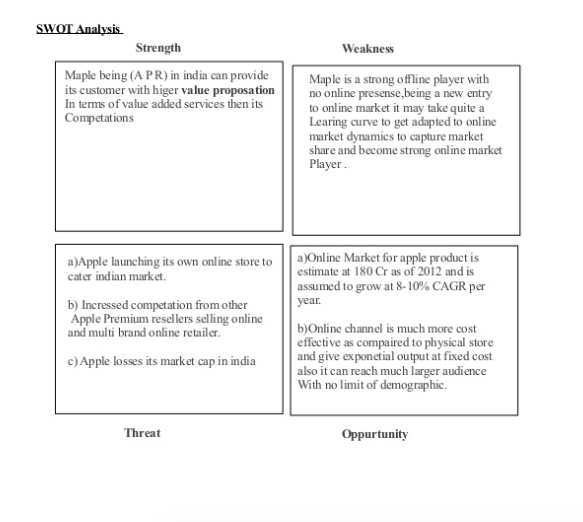
Outlining the strengths, weaknesses, threats, and opportunities of Maple in this format is easy for potential investors to follow. Notating each value with a letter keeps the format consistent, which is carried throughout the plan. For businesses that find their information is best presented in graphics, Maple is a good plan to follow.
2. Nature’s Candy Ecommerce Plan
Nature’s Candy is an online retailer that provides nutritional supplements. Its business plan is available online and is helpful in seeing how businesses go from planning to execution. Below is a preview of its plan in the financial forecasting section.
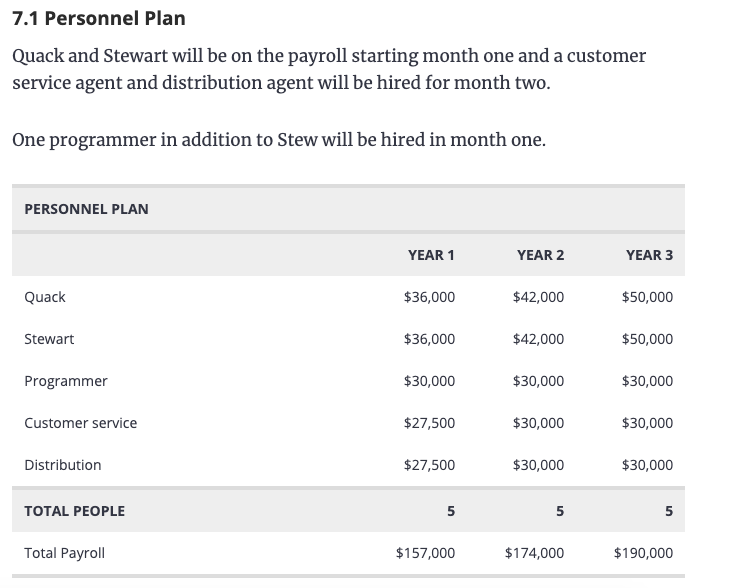
This example shows who will be on payroll yearly, giving investors an idea of how their investment will work in the long term. Planning ahead also shows stakeholders’ dedication to starting up your business.
3. NoHassleReturn Ecommerce Plan
Fictional company NoHassleReturn’s sample ecommerce plan is an expansive, detailed version of how ecommerce would translate to a completely online store. The company itself is structured to offer a way to make returning items bought from an online store a simple process, and the steps to take are featured below.
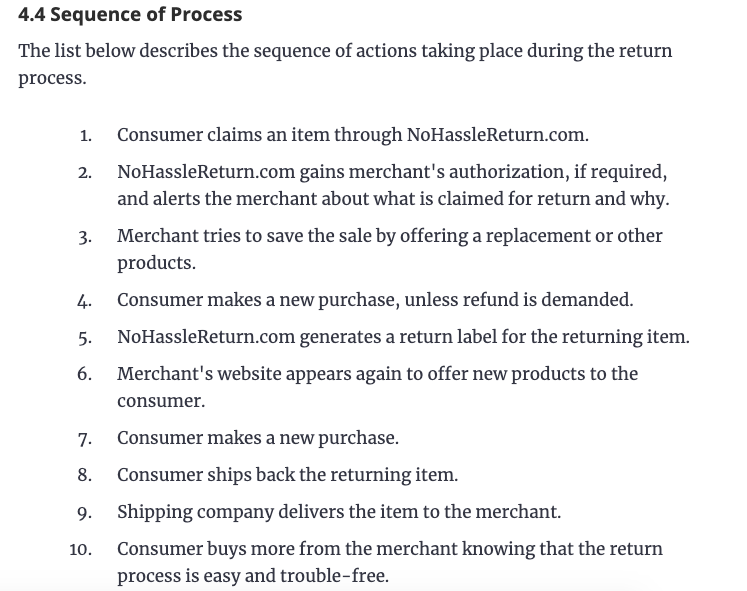
Having a sequence of processes like this is useful if your company is a niche idea. Investors and stakeholders need to know how your business will be new and unique for the market.
Even though writing out a business plan seems like a painstaking process, we have a step-by-step guide to help. This will keep you organized and keep you on track when structuring your business.
4. OGS Capital Ecommerce Plan
This sample ecommerce business plan comes from OGS Capital, where they created a test business plan for Botswana’s first private psychiatric hospital focused on inpatient and outpatient clinical health care. It features detailed sections for the business model, marketing plan, financial projects, and more. This level of detail is demonstrated below in their executive summary section.
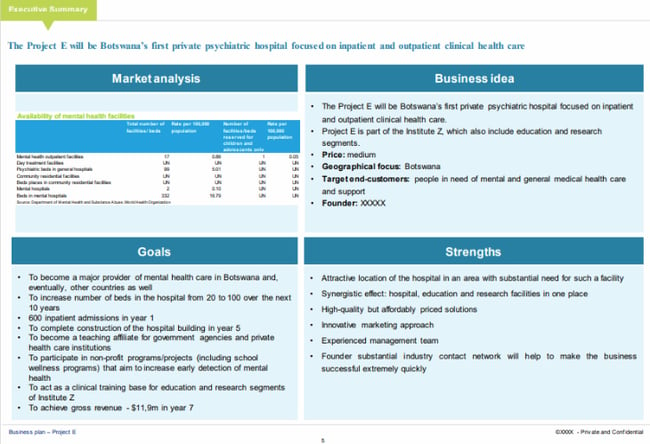
While some ecommerce business plans will explain the executive summary through a series of paragraphs, the layout in this sample makes the information more digestible. The project is separated into sections that detail the business idea, as well as its goals and strengths. The business idea includes price projects, geographical focus, and target customers. Goals for this project are created for 10 years with specific, individual goals built at one-, five-, and seven-year time markers. Lastly, this executive summary highlights the strengths of this business plan to solidify this project and its importance.
5. Egrocery Ecommerce Plan
For centuries, people have left their homes to buy groceries from stores, supermarkets, farmer’s markets, and more. At-home grocery delivery has grown in popularity and is reflected in this sample ecommerce plan for a fictional business named eGrocery. This sample plan establishes the company as an online grocery retail business with plans for connecting customers to distributors for fast, convenient at-home deliveries.
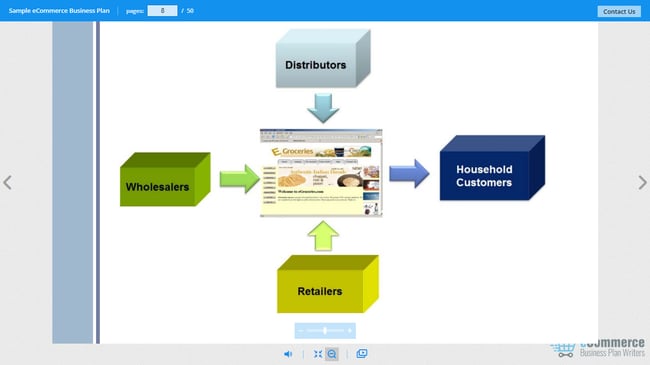
In its business model section, eGrocery outlines how it will implement both a business-to-business (B2B) and business-to-consumer (B2C) model to get products from distributors, retailers, and wholesalers to its household customers. This section provides an effective demonstration of the company’s overall function.
6. Shannon & Shavonne Inc. Ecommerce Plan
Shannon & Shavonne Inc. is a fictional United States-based online retailer that offers its customers an abundance of products in fashion, home appliances, electronics, and more. The depth seen in this plan is particularly helpful, especially with the detail seen in outlining the business structure and each job’s roles and responsibilities.
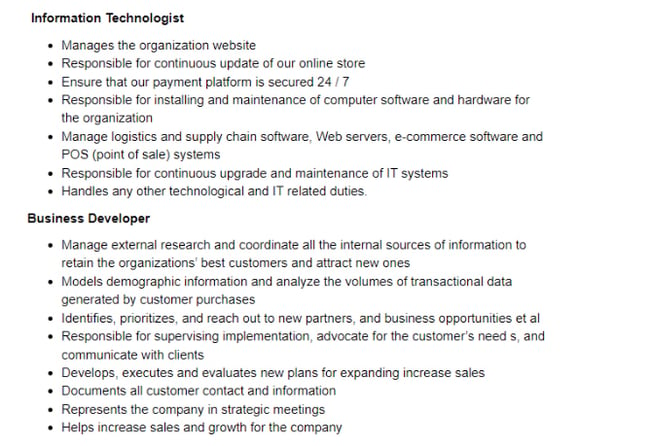
The plan first lists all the necessary roles, from the chief executive officer (CEO) to a call center agent. It then describes the responsibilities of each role. As displayed in the image above, an information technologist (IT) would be tasked with managing the organization’s website, updating the online store, and ensuring the security of the company’s payment platform. The clear distinction of roles helps manage employee expectations and accountability.
7. Firstcry.com Ecommerce Plan
In this sample, we have Firstcry.com — a fictional ecommerce site that creates eco-friendly baby and feminine hygiene products. Because the company is looking for funding to launch the business, its plan focuses on its financial highlights and projections, which is crucial information for investors.
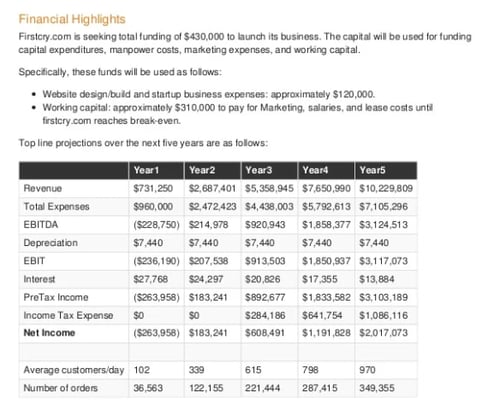
While disclosing what the startup funds will be used for, this plan also estimates its top-line projections over the next five years. As seen in the chart above, they include revenue, expenses, interest, and net income. The plan even breaks down how many customers per day and annual orders will be needed to reach this goal.
When it comes to building an ecommerce business plan, you’ll likely find that the more detail you include, the better.
Planning is the first step.
When starting a business, planning is always a crucial first step. If you find that you’ve launched a company without a concrete plan, it’s never too late. Successful businesses require strategy, and that’s what an ecommerce business plan gives you. It allows you to strategize what your business does, how it operates, and why it’s essential. Not only does it help you pinpoint who the key players of your company are, but it helps you identify who your target audience should be.
With the steps listed in this article and the examples to take inspiration from, you’re one step closer to building an ecommerce business plan for success.
Editor’s note: This post was originally published in November 2019 and has been updated for comprehensiveness.
![]()



